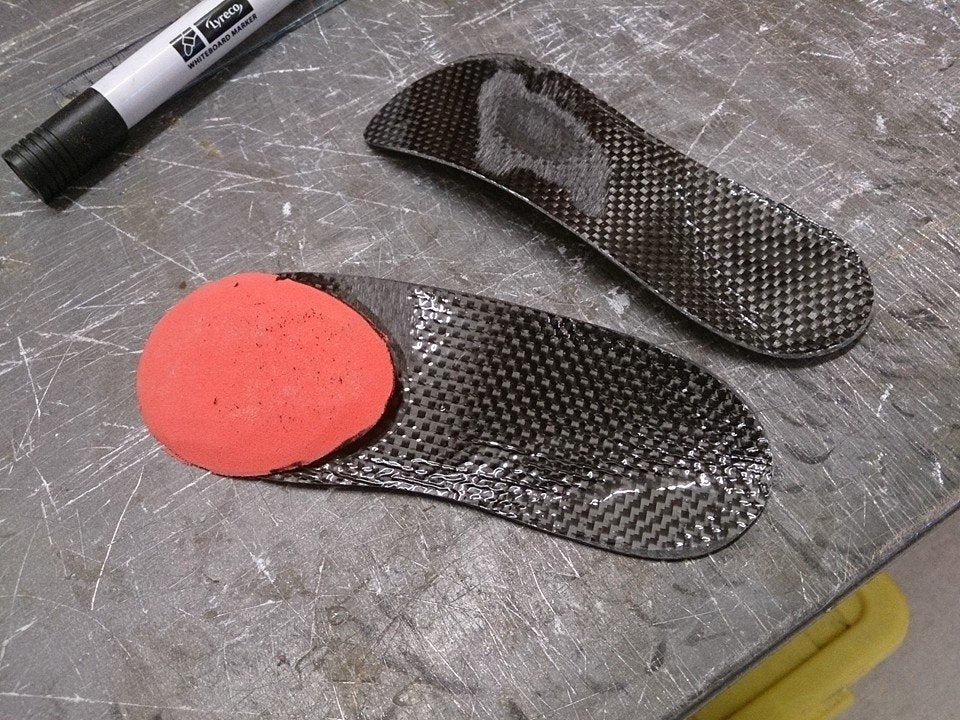Cycling is a repetitive, demanding sport and for a lot of you, will involve hours of training and racing every week. Whether you are competing at a high level, racing the clock against your old PBs or simply getting out on a weekend to get the heart pumping - even a small biomechanical inefficiency or anatomical difference can lead to discomfort or dysfunction over time.
One of the most common complaints we hear from riders is numbness, tingling or neural pain in the feet or toes during a ride, sometimes even enduring beyond your time in the saddle.
In this post, we will discuss and aim to help you identify some of the causes and give you some options about how to fix them.
What causes foot numbness when cycling?
Numbness is usually a sign of nerve compression or irritation, and more often than not, when it occurs, it’s related to:
Shoe Fit Issues
Cycling shoes come in all shapes and sizes, and regardless of your discipline (road, MTB, Gravel) they tend to be manufactured with stiffness and a firm fit being at the forefront of their design. This is great from a power transfer perspective but can be disastrous when the foot and shoe relationship is inappropriate.
Shoe fit issues generally present in reality as the shoe being too small. Shoes that are too short, too narrow, too shallow or being designed with a pointed toebox shape can all be at the root of the problem in those experiencing numbness or tingling when cycling. These features can cause compression of the common digital nerves leading to some of the aforementioned unpleasant sensations. The presence of anatomical change related pathologies such as neuromas or bursitis can lead to an increased likelihood of experiencing these symptoms but can also be caused by these factors on and off the bike.
Although we tend to observe a higher propensity for a cyclist riding in a shoe with not enough room, conversely, we also see some of these problems related to a shoe that is too big. Not only does this allow the foot to be a victim of more shear forces due to twisting or sliding but sometimes it can necessitate and lead to:
Improper cleat position
Cleats that are positioned more distally in relation to the foot (towards the toes) can increase pressure on the forefoot and apply undue forces upon quite superficial nerves near the metatarsal heads. Medial/lateral positioning and rotation of the cleats can also affect how the foot interacts with the shoe. Taking this into consideration, we must also take into account the amount of float available in your chosen pedal system and cleat selection.
Lack of arch support
This facet is often over-simplified and can often be targeted towards those in the population who have been identified as ‘flat footed’. If it were this simple and dichotomous then our jobs identifying and solving numbness, hot spots and myriad of other foot problems would be a piece of cake. Unfortunately, if you haven’t gathered from some of our other blog posts, feet and the forces and movements they undertake are complex - and the benefits of a contoured insole, innersole, footbed, orthotic (or whatever else you may see them called) isn’t exclusive to this portion of the population. There can be remarkable differences noted in all foot types from an insole or orthotic if it has been designed for the foot with the particular mechanisms of action (causative factors) taken into account.
Vascular or Proximal issues
There are also vascular, or blood supply issues that can lead to altered neural sensation in the feet and lower limb that are relevant enough to not be dismissed - however, for the sake of brevity we won’t go into them too much in this article. There are also relatively common proximal nerve issues that we see, more often than not, relating to the lumbar spine and hip region but can also be present in the lower leg.
Both of these issues should be addressed and diagnosed by your physiotherapist, bike fitter or other health professional if in doubt as saddle height and overall bike fit can play a part in these issues.
How Cobra9 Insoles Can Help
As podiatrist-designed cycling orthotics, our insoles are engineered to address common causes of neural symptoms by:
Improving support of key structures
Appropriate support reduces foot longitudinal and transverse collapse and offloads of pressure-sensitive areas.
Distributing load
Our carbon InnerCore shapes are designed to help spread force across the plantar surface of the foot relative to the foot types they are appropriate for, reducing nerve irritation/compression - all while keeping the shoe fit as it should be.
Our devices are based off modelling of the thousands of feet seen throughout our clinical experience. These aren’t simply proprioceptive or placebo devices made to ‘feel’ like they’re supporting the arch of your foot. They provide real structure and apply forces where you need them to make a noticeable change and improve ride comfort.
Combined with a well-fitted shoe with correct cleat position as well as position on the bike, the right orthotic can significantly reduce the risk of numbness and improve your experience massively.
Still Struggling? Let’s Talk.
If foot numbness or burning is affecting your ride, we’re here to help. Our team can guide you to the right support or you can check out how to FInd Your Fit— and ensure your setup is working with your body, not against it. Get your bite back.
Explore our SemiPro range here or reach out for personalised advice.




Leave a comment
This site is protected by hCaptcha and the hCaptcha Privacy Policy and Terms of Service apply.